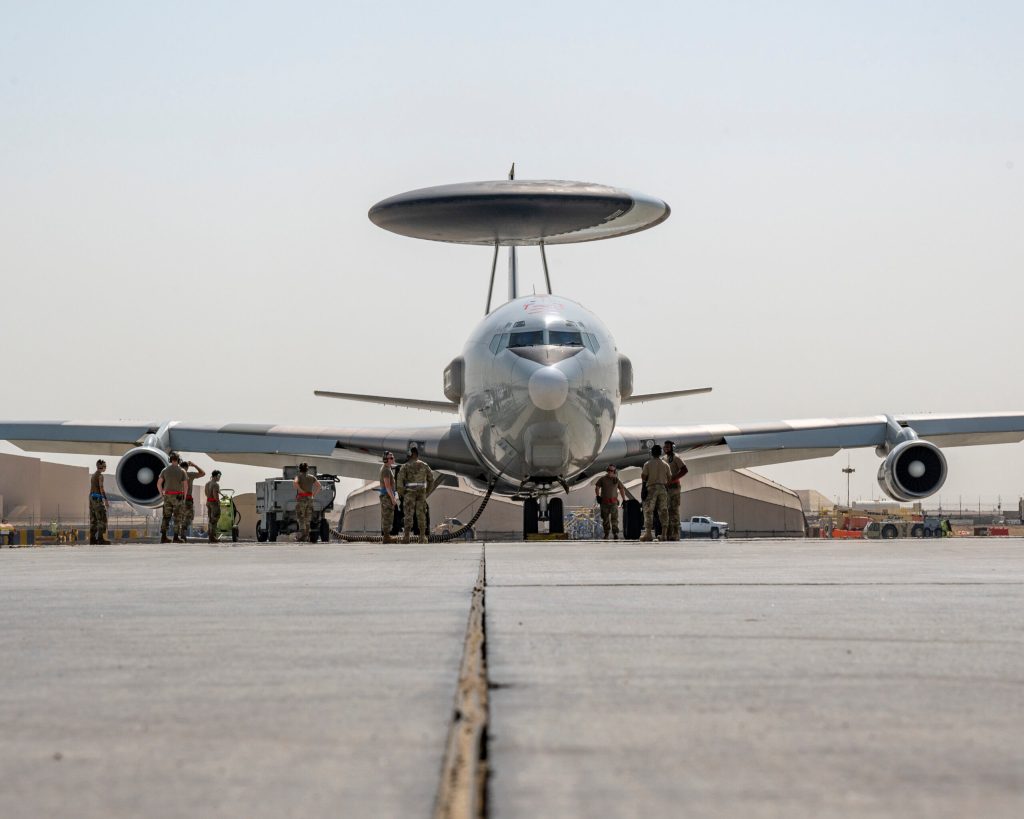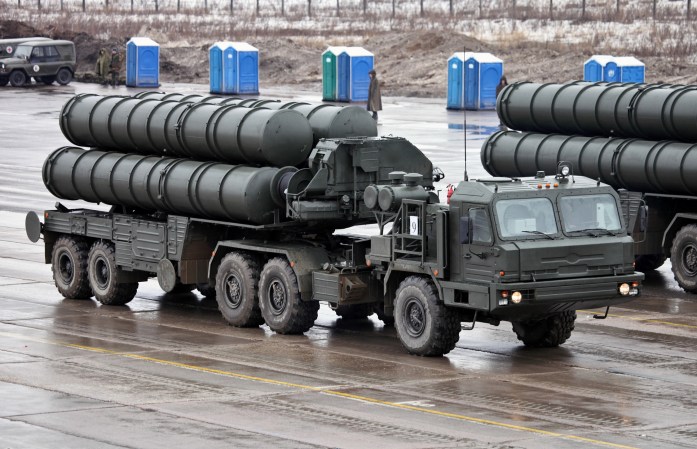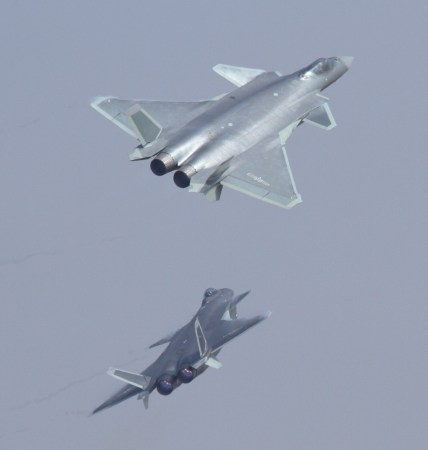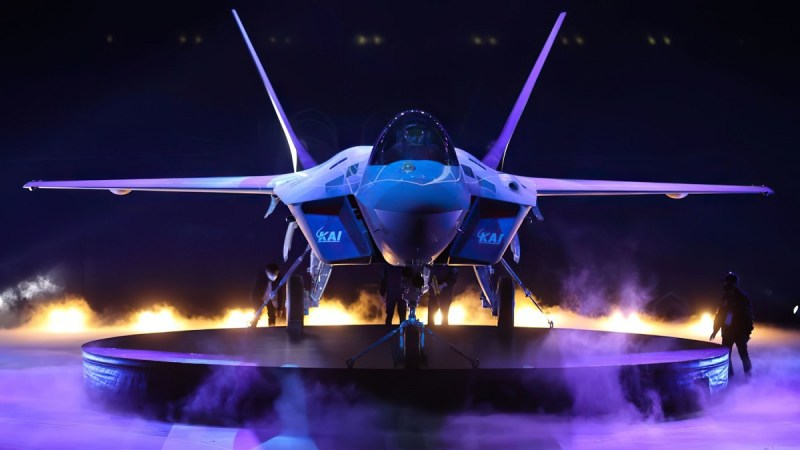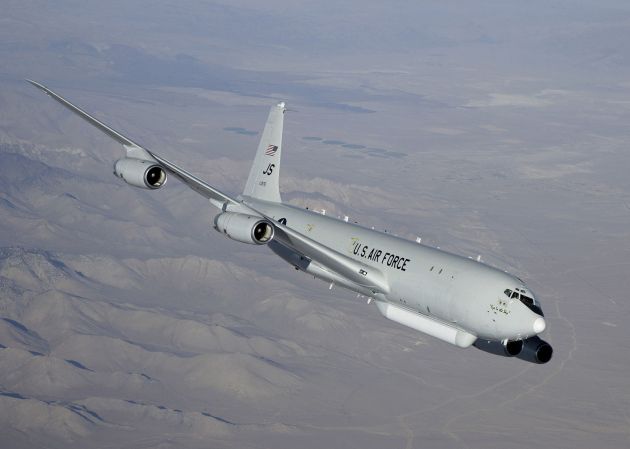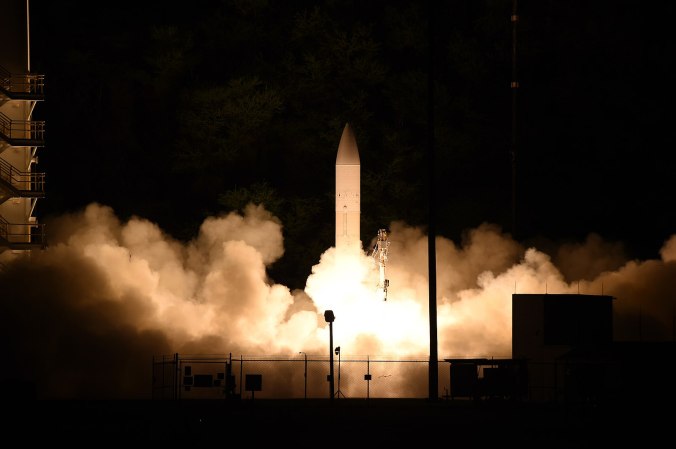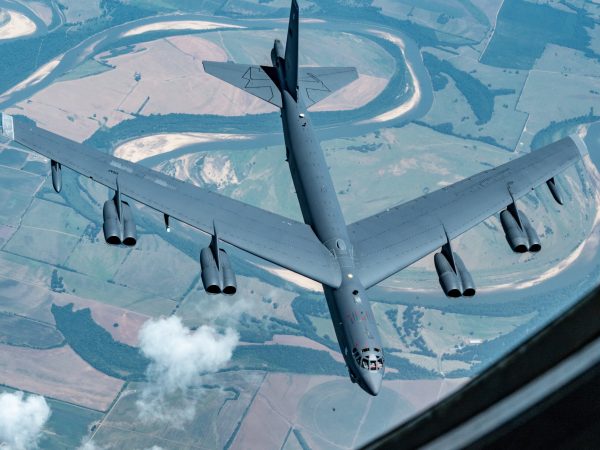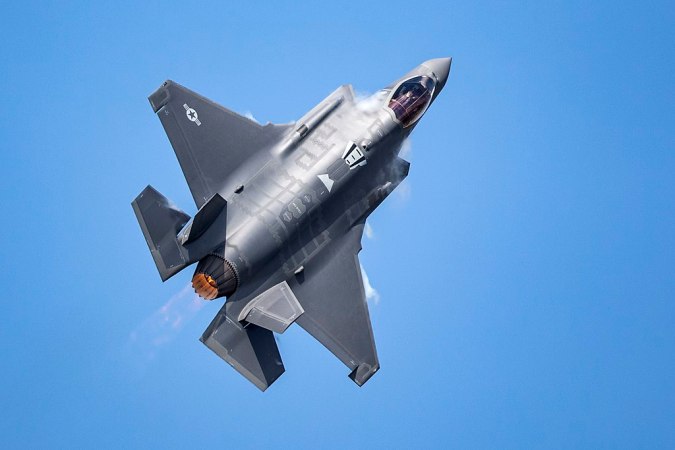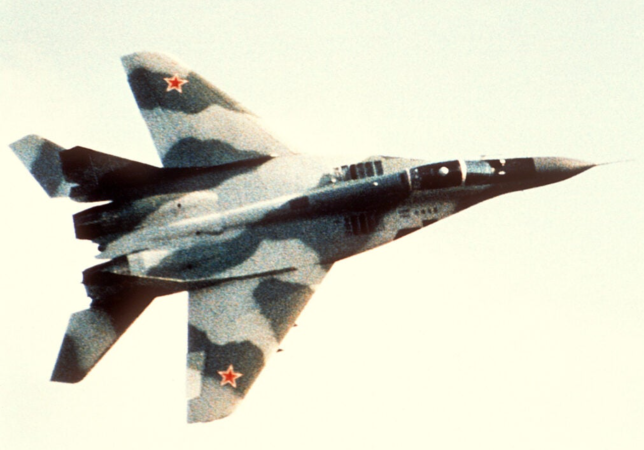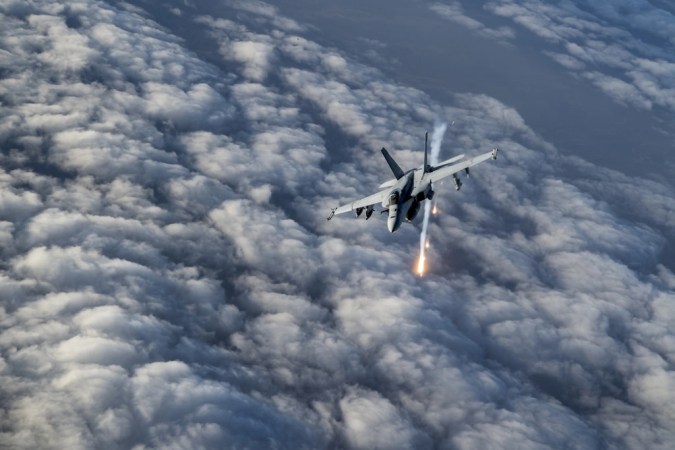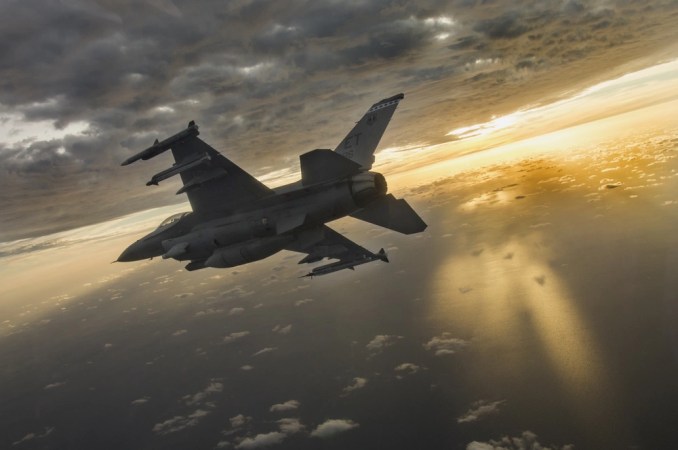The E-3 Airborne Early Warning and Control System, also known as AWACS, might be the key to American dominance in military operations. Its integrated command and control battle management provides an accurate, real-time picture of any battle space to any Joint Operations Center. It tracks friendly forces, hostile forces, and neutral parties on the ground, in the air, and at sea.
The aircraft itself is called the E-3 Sentry, and it’s basically a modified Boeing 707 commercial liner with a 30-foot diameter rotating radar dome on top of it. That massive dome tracks radar signals from the Earth’s surface all the way up to the Stratosphere. It is the U.S. military’s all-purpose information nerve center during any operation, in any environment, anywhere in the world.
With all of that in mind, it seems like the first thing an enemy might do is locate the U.S. AWACS and take it out, blinding the American joint force and preventing its interoperability on offense or defense. After all, how hard could it be to shoot down what is basically a civilian 707 with a massive lump on its back? The truth is that shooting down an AWACS is going to be much harder than anyone might expect.
The first issue with attacking an AWACS is the AWACS mission itself. It knows where nearly everyone in the battle space is, friend or foe, and can be in contact with any one of those units. Most importantly for the defense of the AWACS, this means it can position itself outside of the range of any ground-based or air-to-air aerial defense system that might be present. It’s free to do its important work without worrying about pesky surface-to-air missiles (SAM).

If it were too close to an enemy SAM site, the moment the SAM powered its radar on, the AWACS would detect it, identify the site as a target, and call on U.S. Air Force and U.S. Navy assets to completely destroy the site as a threat. An AWACS doesn’t even need to be close to a target, with a range of up to 250 miles, the AWACS will be able to see a radar signature before the enemy sees the AWACS.
Any aircraft that managed to scramble off the ground to attack the AWACS would not be able to rely on the ground-based radar system the enemy had in place, because by the time the aircraft took off, the radar would likely have been destroyed by American air power. Once an enemy fighter does make it off the ground, it would have to hunt for the AWACS on its own.
Without aerial refueling, it wouldn’t allow much time for the enemy pilot to find, engage, and destroy the AWACS before it would be forced to land. Finding the AWACS on one tank of jet fuel is unlikely, considering the AWACS radar is much more powerful than the onboard radar of any jet fighter. The AWACS can see the enemy fighter long before the enemy can see it, and could evade the enemy indefinitely. Most importantly, it doesn’t have to evade enemy fighters.
An AWACS can simply call on the many, many aircraft that are likely already airborne and direct an attack against any enemy air assets that might be searching for it. The F-35 Joint Strike Fighter has the ability to see well beyond the range of most likely enemy aircraft and is able to engage targets at a distance, whether called on by the AWACS, Joint Air Operations Center, or any other command.
One emerging problem for AWACS is the increasing range of standoff weapons like long-range missiles. Countries with stealth technology could potentially approach the aircraft and fire off one of those longer range weapons, attacking the vulnerable aircraft at a considerable distance. China’s People’s Liberation Army Air Force has stealth technology in its Chengdu J-20A. If a J-20 fired a PL-15 missile, the missile’s range of more than 200 kilometers would be able to take down an AWACS.
If an enemy air asset actually happened to be able to locate the AWACS undetected and prepare to engage, the AWACS is such an important asset, that it likely has its own fighter escorts. Those escorts, in many cases, would likely be superior to anything most large enemy fleets are flying and would make short work of an attacker. Simply put, there’s a reason no AWACS has ever been lost in combat – attacking one is a suicide mission.

